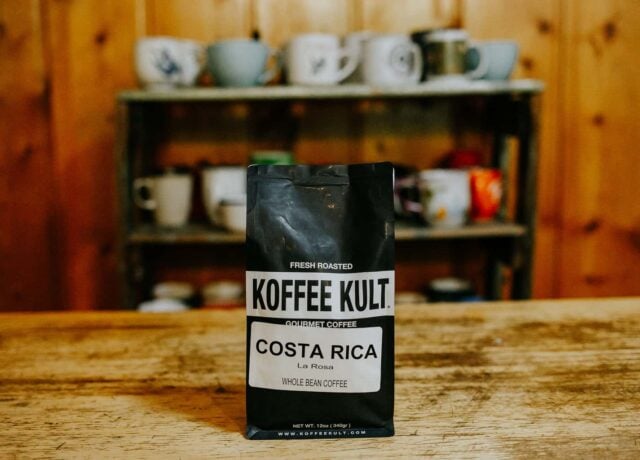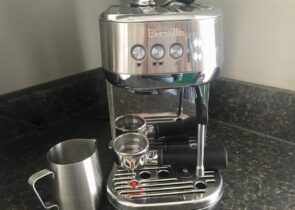Picture this: You’re not just making coffee. Holding a bamboo paddle, you conduct a captivating symphony of visuals, sounds, and aromas, akin to a maestro leading an orchestra.
This is the extraordinary world of vacuum brewing, where a tasty cup of joe is the reward for a well-executed performance. Join me in this intersection of coffee science and artistry with this review of the Hario Syphon lineup.
I’ve had years of experience with this type of brewer, and let me tell you straight up: The workflow is meticulous and isn’t for those who prefer abbreviated morning routines. Keep reading to see if spending the extra time is worth it.
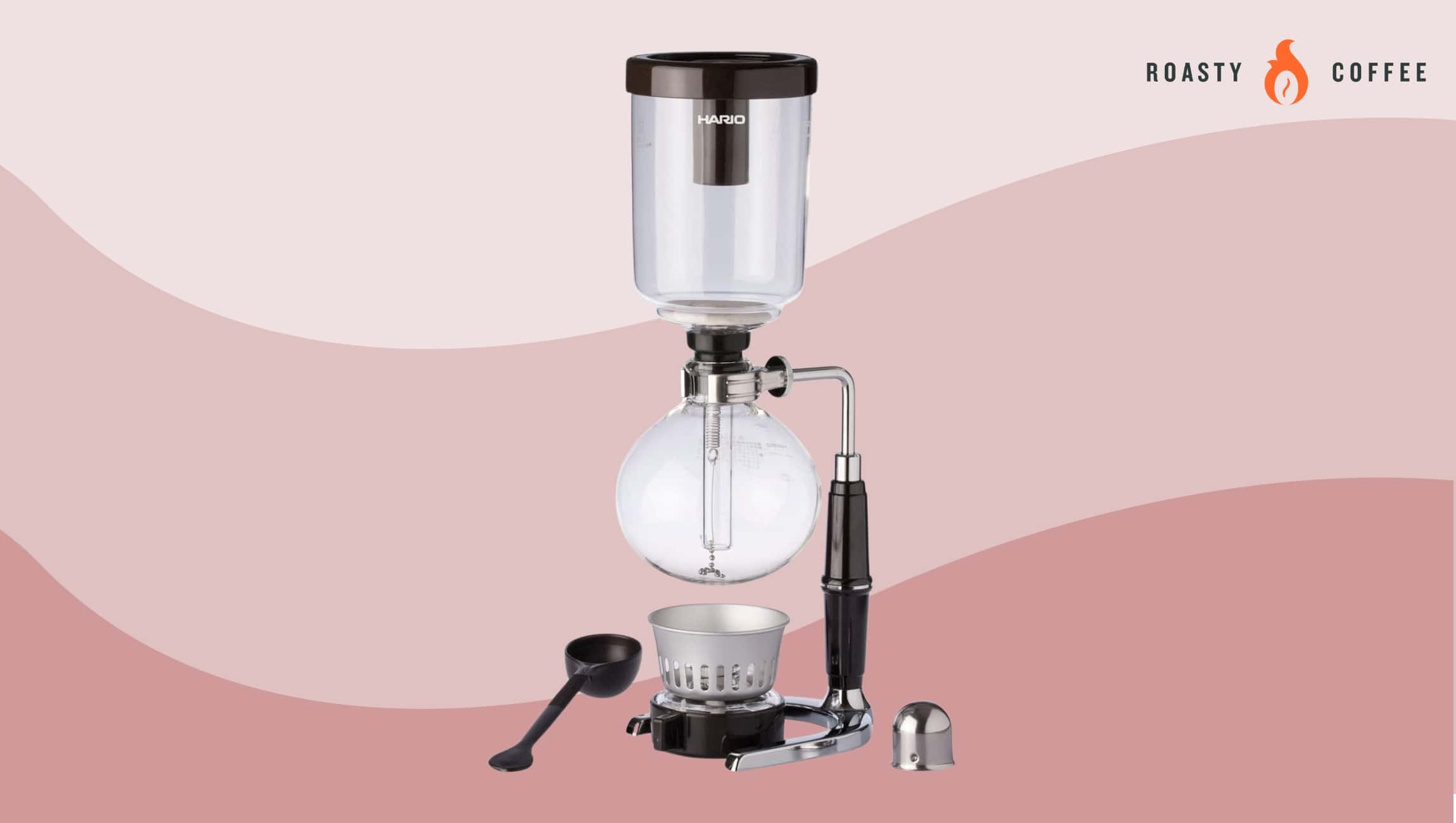
Key Takeaways
- Vacuum brewing with the Hario Syphon range turns coffee making into an exciting performance, though its complexity and fragile parts could be daunting for some users.
- With multiple models like the classic ‘Technica’ and the elegant ‘Sommelier’, Hario offers unique coffee siphons that fundamentally work the same way, but differ in brewer shape, capacity, and ergonomics.
- The Hario Syphon’s unique brewing mechanics facilitate a consistently hot, flavorful cup of coffee, but users must be prepared for a hands-on approach and time-consuming clean-up.
Things To Consider Before Buying the Hario Syphon
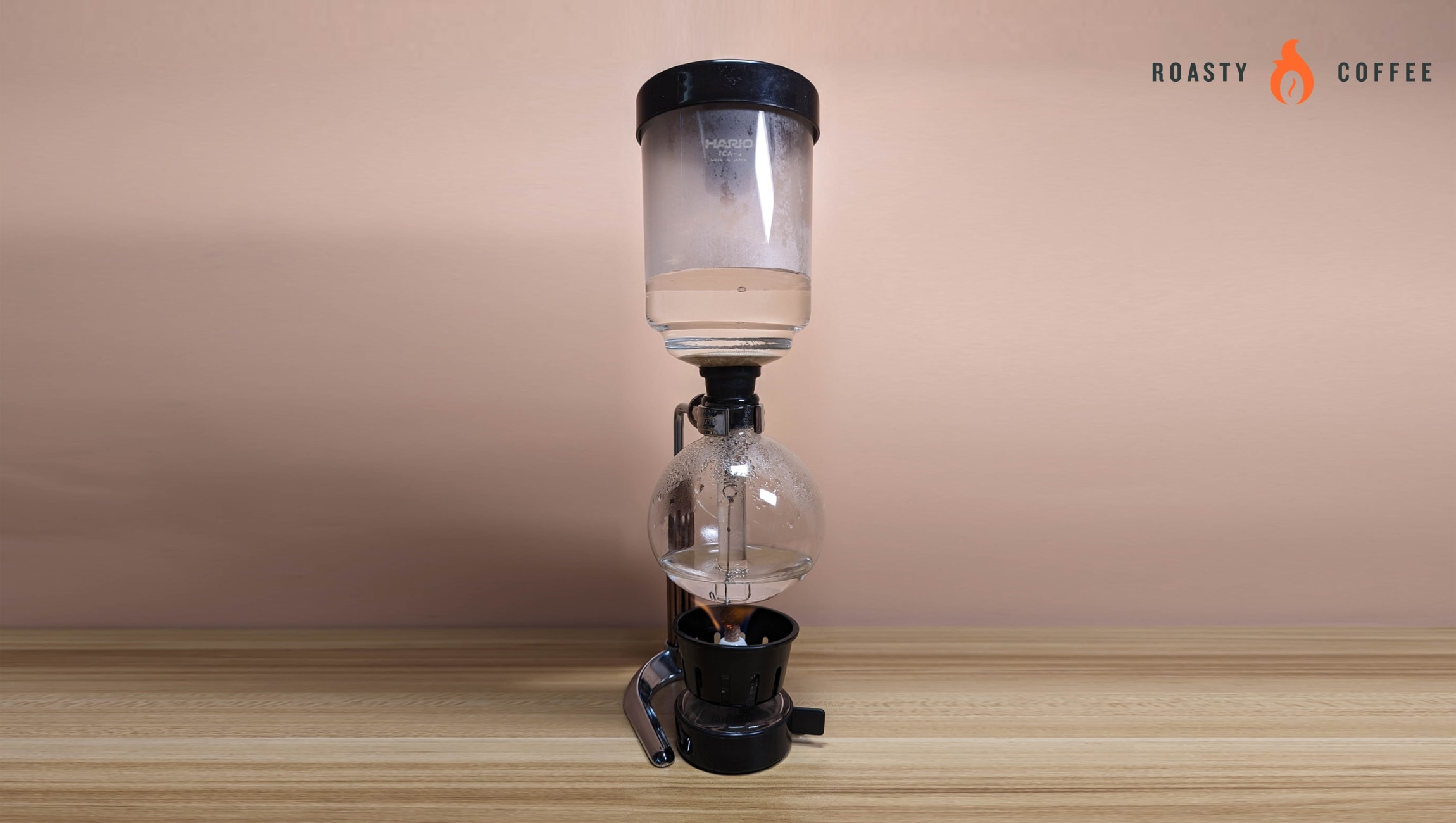
It’s an impressive piece of kit, and it’s certainly fun to use. But it’s not for everyone. Here are a few things to consider before you spring for a siphon brewer:
Caution: Fragile
Vacuum brewers look like something straight out of a high school chemistry lab. Hario uses high-quality materials for all their siphons, but their shape and heft make them quite easy to tip them over. Handle with care!
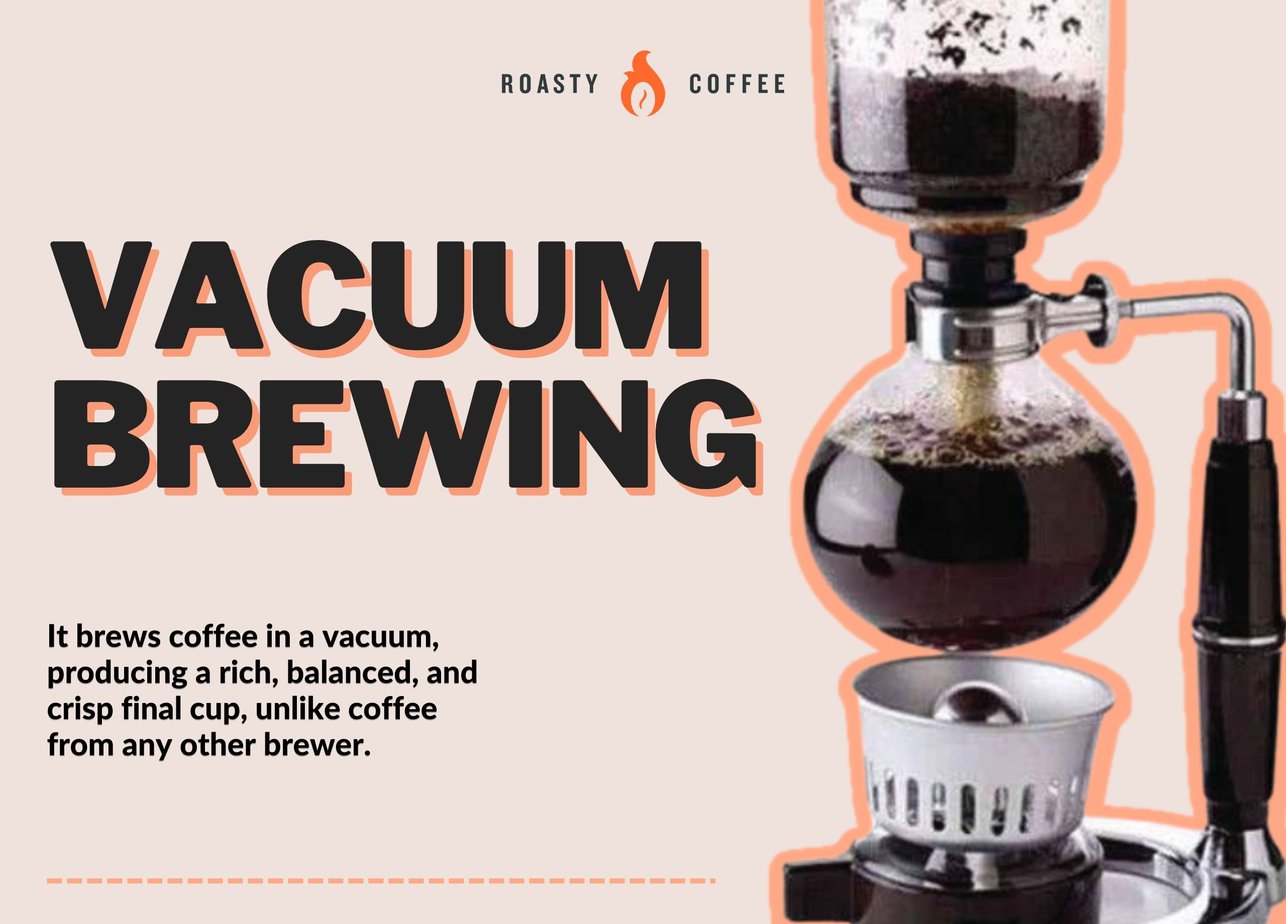
Playing with Fire
A heat source is a must when brewing with a siphon, whether that’s the included alcohol lamp or an aftermarket gas burner. Be mindful of where you use this brewer, especially when refueling your heat source.
If you’re not comfortable with operating an open flame or if your area has restrictions, then this might not be the best method to use.
Some Assembly Required
If your ideal coffee brewer is one you can quickly set up and toss away after, then you might want to look elsewhere. All of the parts of a siphon brewer need to be assembled precisely to properly brew that mad scientist magic. The same goes for tear-down and storage too.
Parts Upkeep
Hario’s Syphon brewers are made with high-quality materials, but some parts will wear out over time. The cloth filter is reusable, but it won’t last forever. Rubber seals between the glass parts may also crack or get brittle with age. Both are essential to create that pressure seal that allows the physics principles to work during the brewing process.
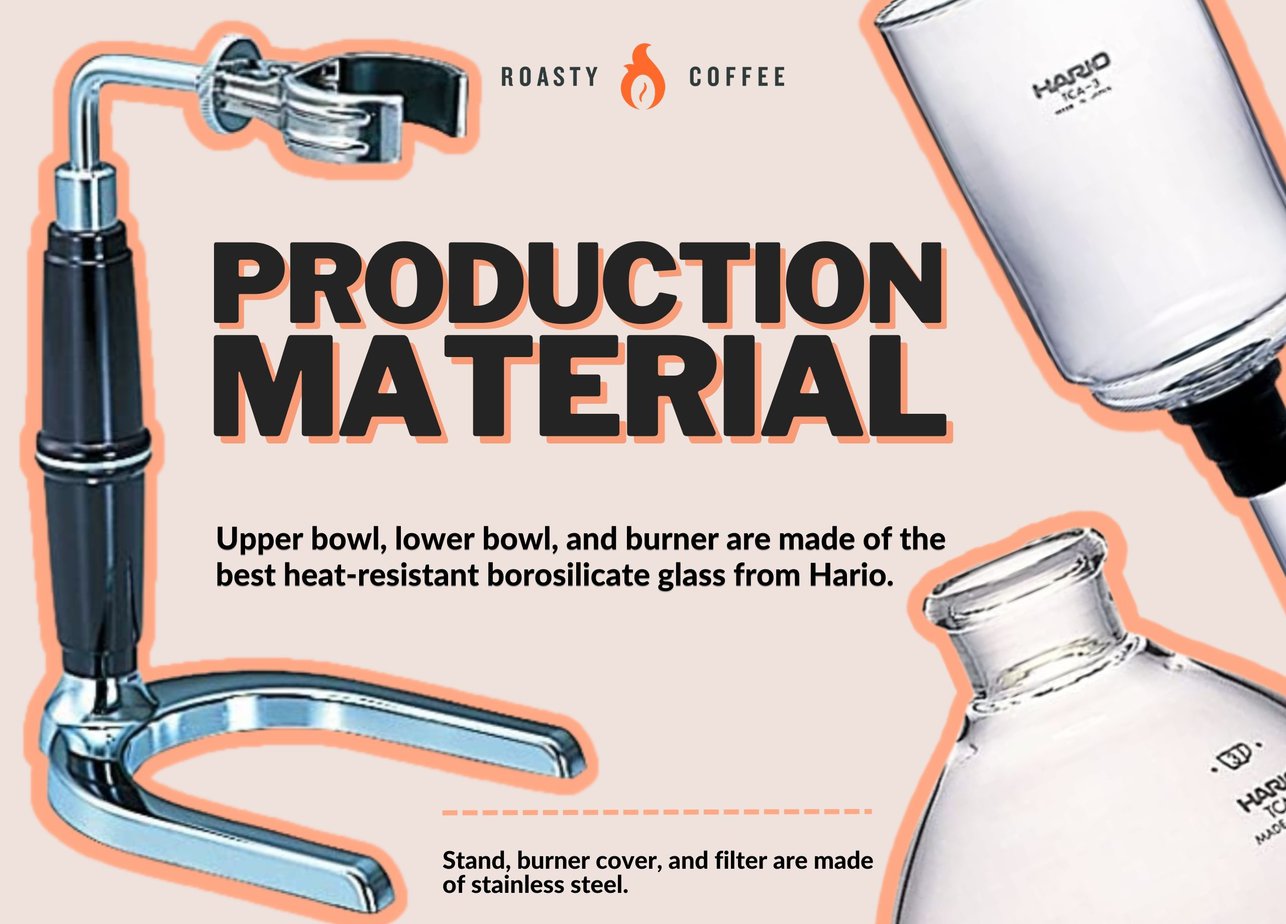
Hario offers replacement parts for these, so it’s easy to keep your siphon in tip-top shape.
A Quick Look at the Hario Syphon
Renowned Japanese glass maker Hario has an entire line of siphon vacuum brewers under the Syphon collection. The most popular one is the ‘Technica’ model — a classic design inspired by early siphons from more than a hundred years ago.
Siphons brew coffee through immersion, using principles of gas expansion and gravity. Heating water in the lower glass chamber allows vapor pressure to push through the filter, and into the upper chamber. Solubles are extracted once ground coffee is added to the heated water and stirred.
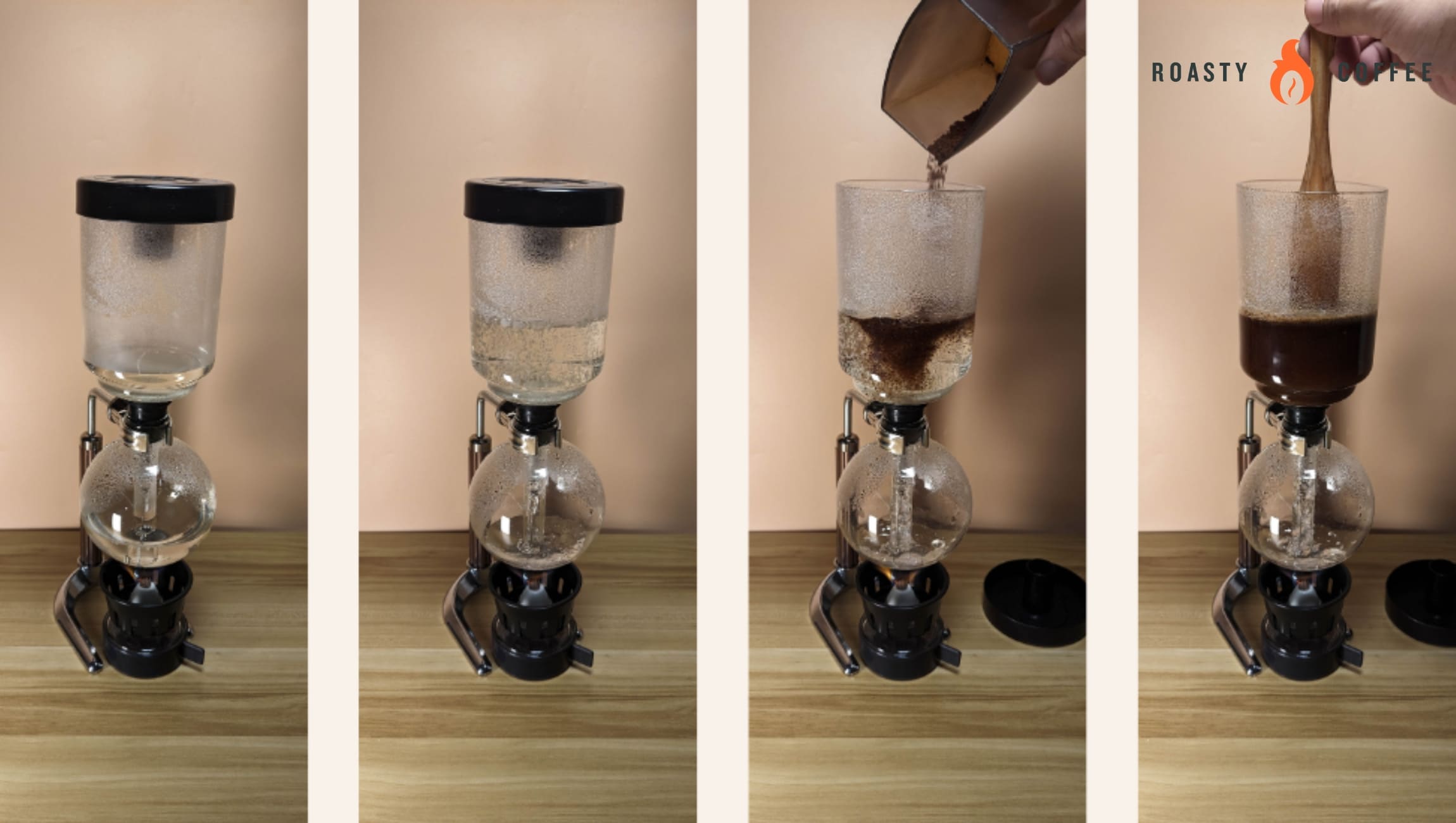
The brewing process stops once the heat source is removed. Liquid coffee gets strained back down through the filter assembly and into the lower chamber, leaving the grounds separated on top. (For a more detailed explainer, check out our feature on siphon coffee.)
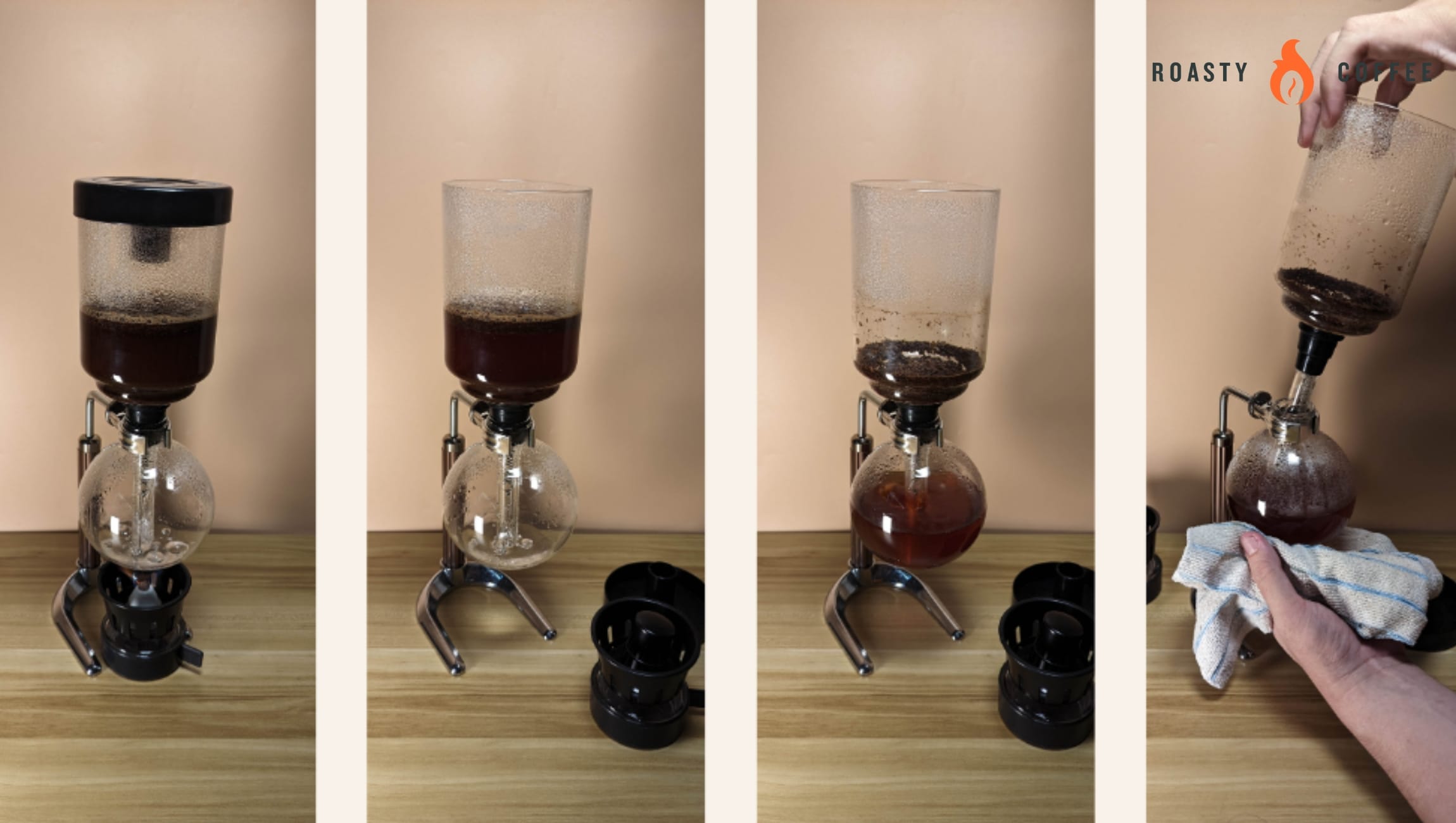
While the other models in the lineup may look different from the Technica, they pretty much operate the same way. Here’s a quick look at the rest of the models:
- Moca: Hario’s second-ever vacuum brewer with a shorter profile
- NEXT: Features an ergonomic silicone handle and two included filters
- Sommelier: Uses a wine decanter-inspired vessel and includes two filters
- Miniphon: A one-cup version for solo drinkers
All five vacuum brewers feature the same basic parts but differ in glass shape, capacity, and optional creature comforts. However, our review notes on usage should remain accurate, regardless of the model you have.
Features and Benefits
Hario’s Syphon collection features a lot of parts that are essential to making magic happen. Let’s cover those in detail, as well as the good bits of the vacuum brewing process:
Quality Parts
Hario means the “King of Glass” so you can rest assured that their siphon brewers are made with the best materials.
Borosilicate Glass Chambers
The most important parts of the siphon set are the top and bottom brewing chambers. Hario uses tough borosilicate glass for both pieces, giving them added durability and heat resistance.
On traditional designs like the Technica, the bottom chamber is shaped like an inverted light bulb. This helps keep things even on the heating front, allowing the heated water vapor to migrate up top efficiently during the brew.
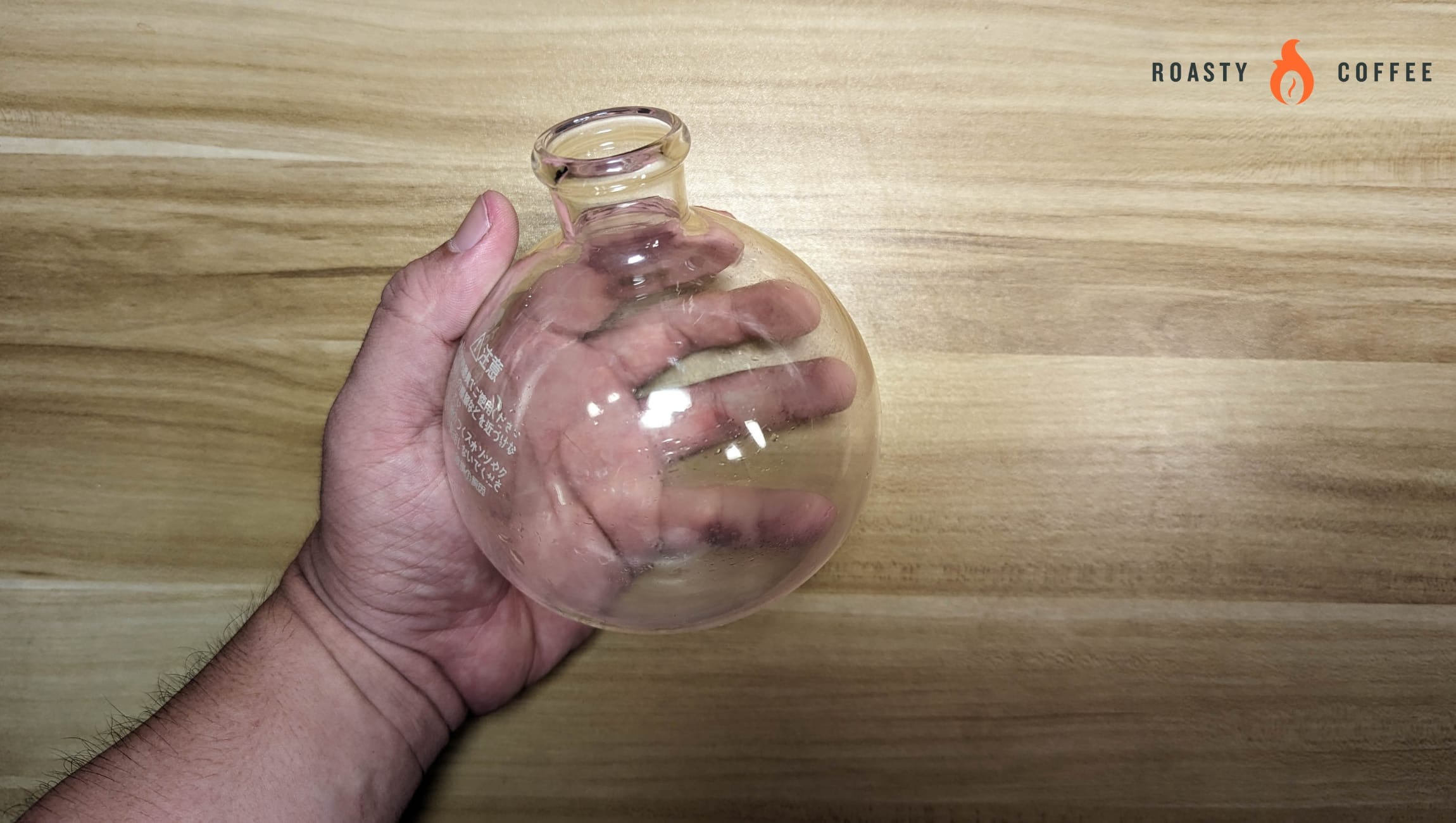
The top chamber of the Technica resembles the beaker of a French press with a hollow glass rod protruding downward. This part is designed to connect to the bottom chamber, with a rubber stopper creating a pressure seal.
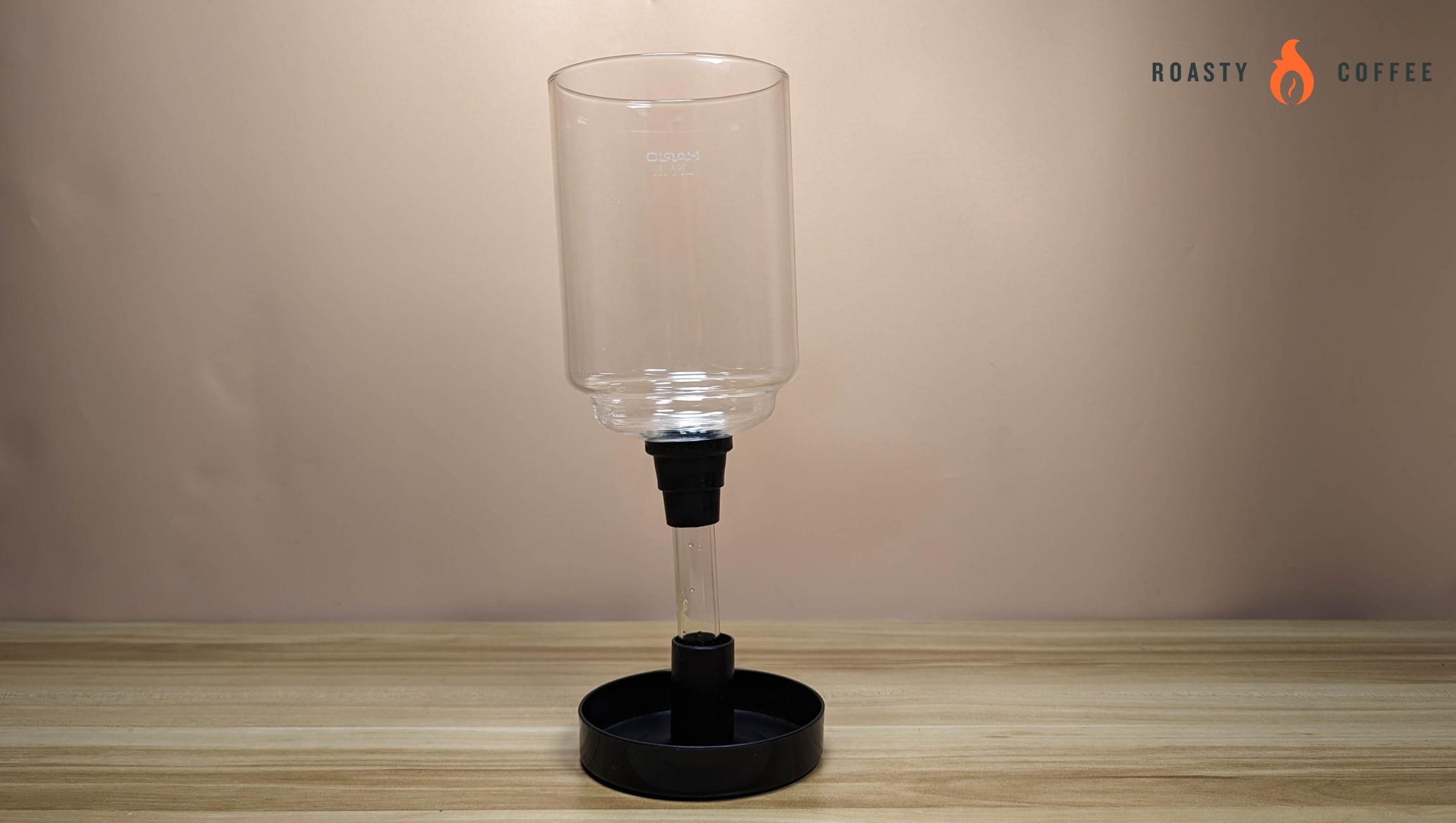
Pro tip: Flip the lid and you’ll find a handy holster that can hold the glass rod section of the upper chamber upright when it’s not connected to the rest of the kit.
Siphon Stand
This part serves as the structural mount for the bottom chamber, which is safely secured with the help of an adjustable clamp. Its steel construction is beefy enough to support the weight of the entire setup, even when filled with water and coffee.
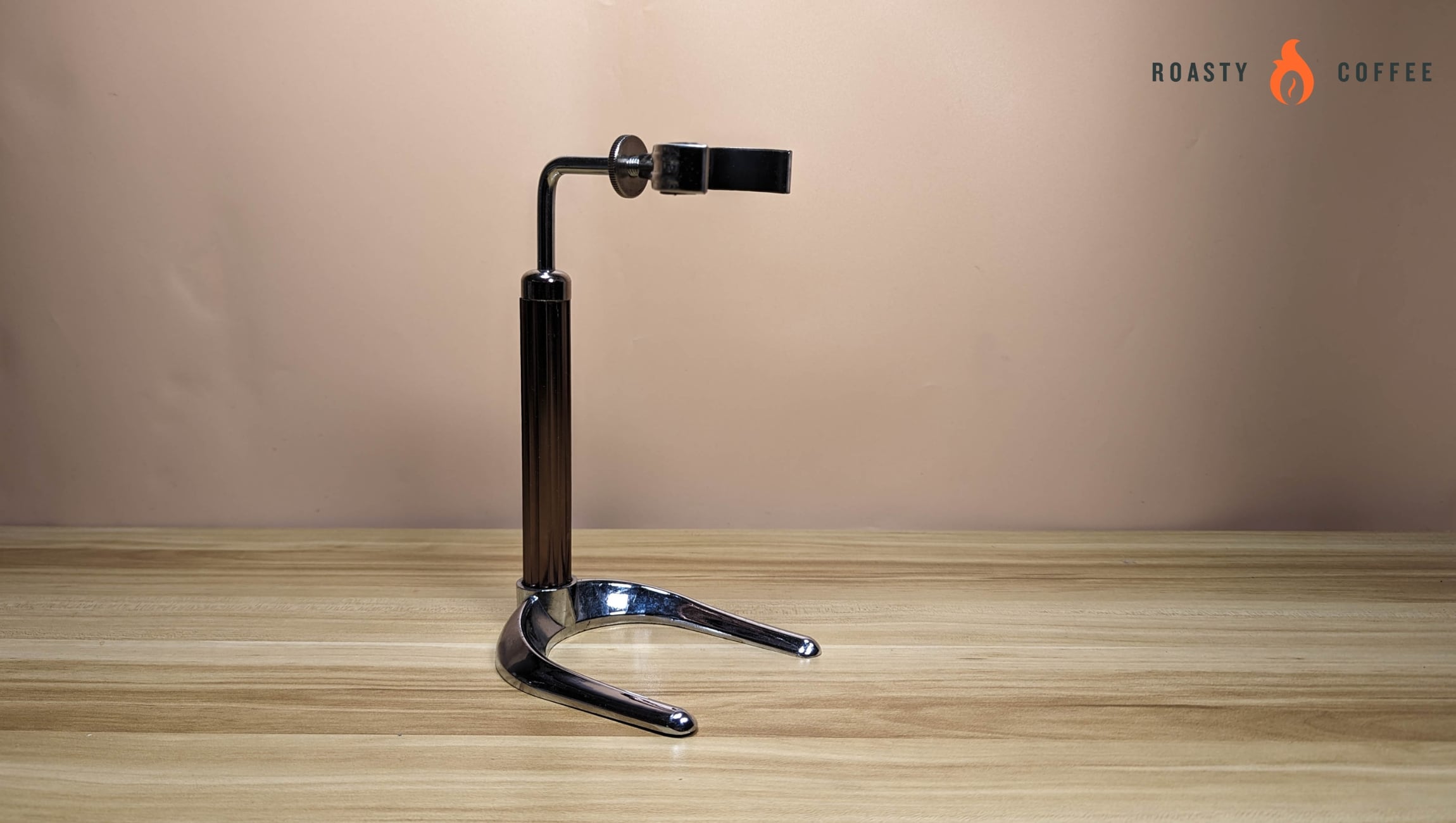
It also doubles as a handle for the bottom chamber when it’s time to pour the coffee out.
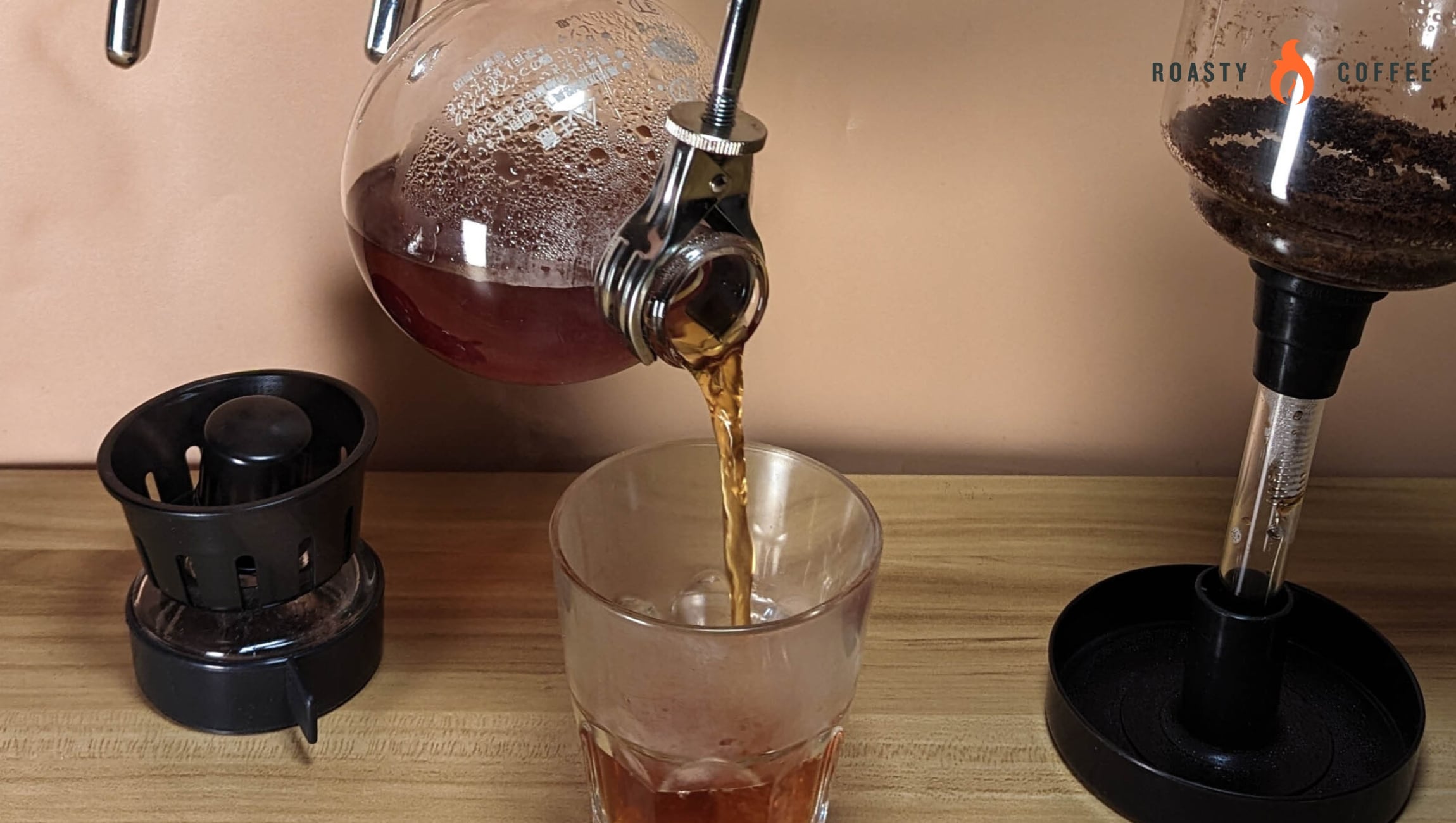
Cloth Filter Assembly
Siphon brewers traditionally come with a round cloth filter mounted on a stainless steel disk holder, and connected by spring to a hook. The filter sits on the base of the upper chamber, with the hook latched onto the end of the hollow glass rod, keeping it in place.
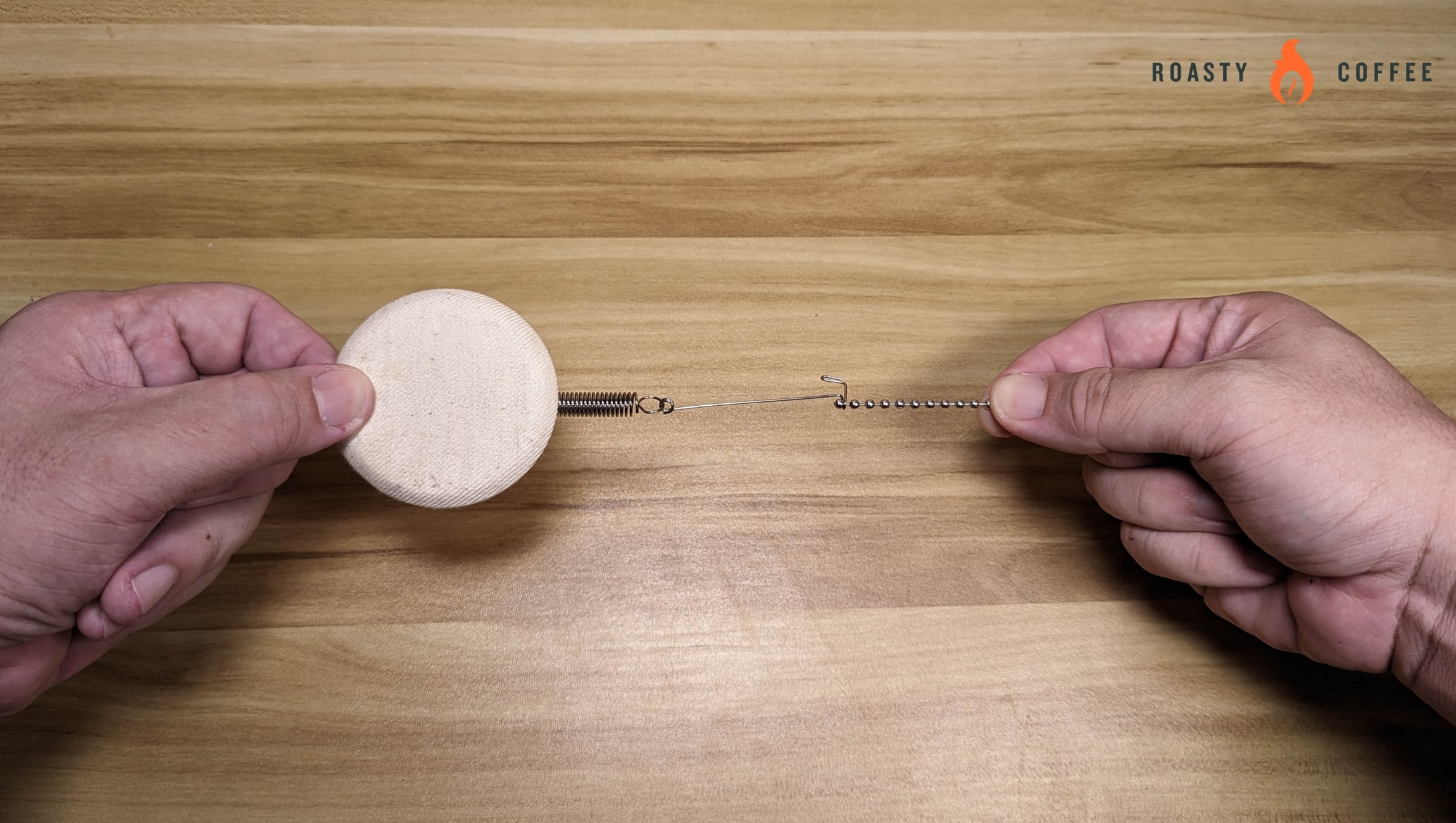
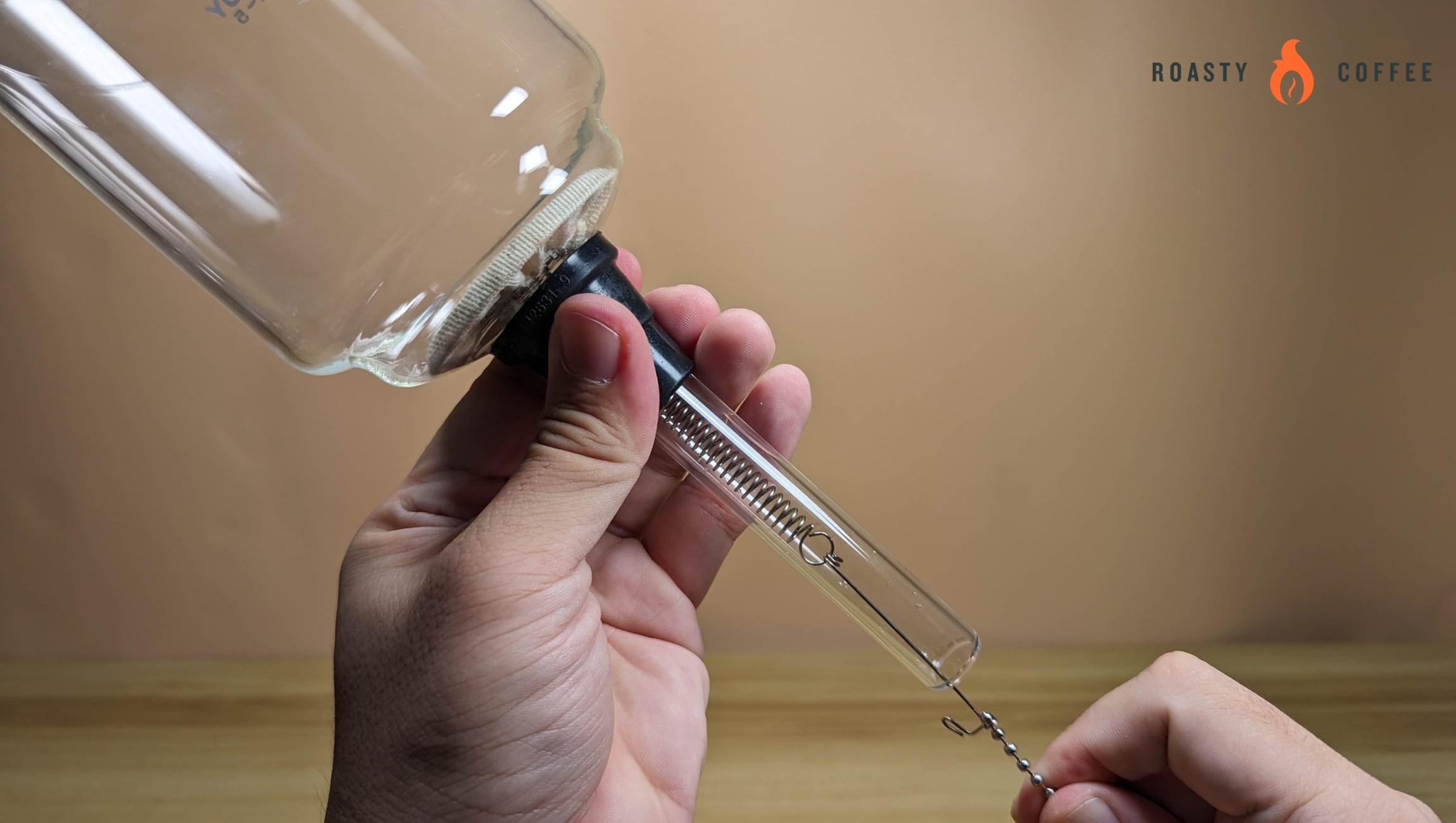
Cloth filters strike a balance between paper and stainless steel options. They efficiently strain sludge and grit from your brew and can be reused dozens of times with proper cleaning and storage.
Hario also makes reusable stainless steel filters (which come standard in the NEXT and Sommelier Syphons). Or for simpler clean-up, there’s an adapter that takes single-use paper filters.
Alcohol Burner
All the Hario Syphons come with a basic alcohol burner so you can start brewing out of the box. The flame isn’t adjustable on this setup (think of it like a candle), but it is simple to refuel and use. Just fill the flask with some rubbing alcohol and light it up!
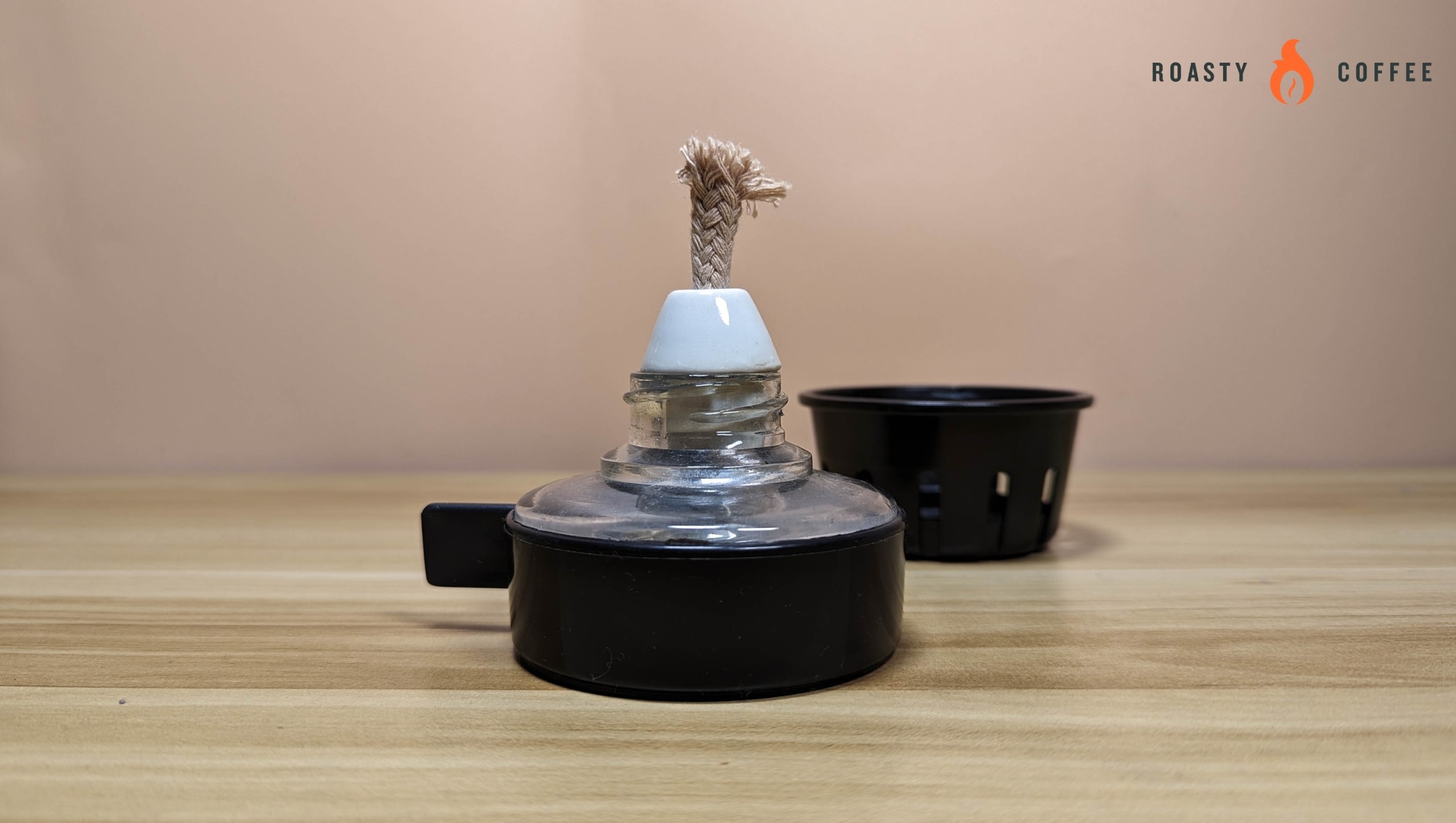
Another pro tip: Use denatured alcohol (from a hardware supply shop like Home Depot) for a soot-free flame that burns more efficiently. Cheaper too!
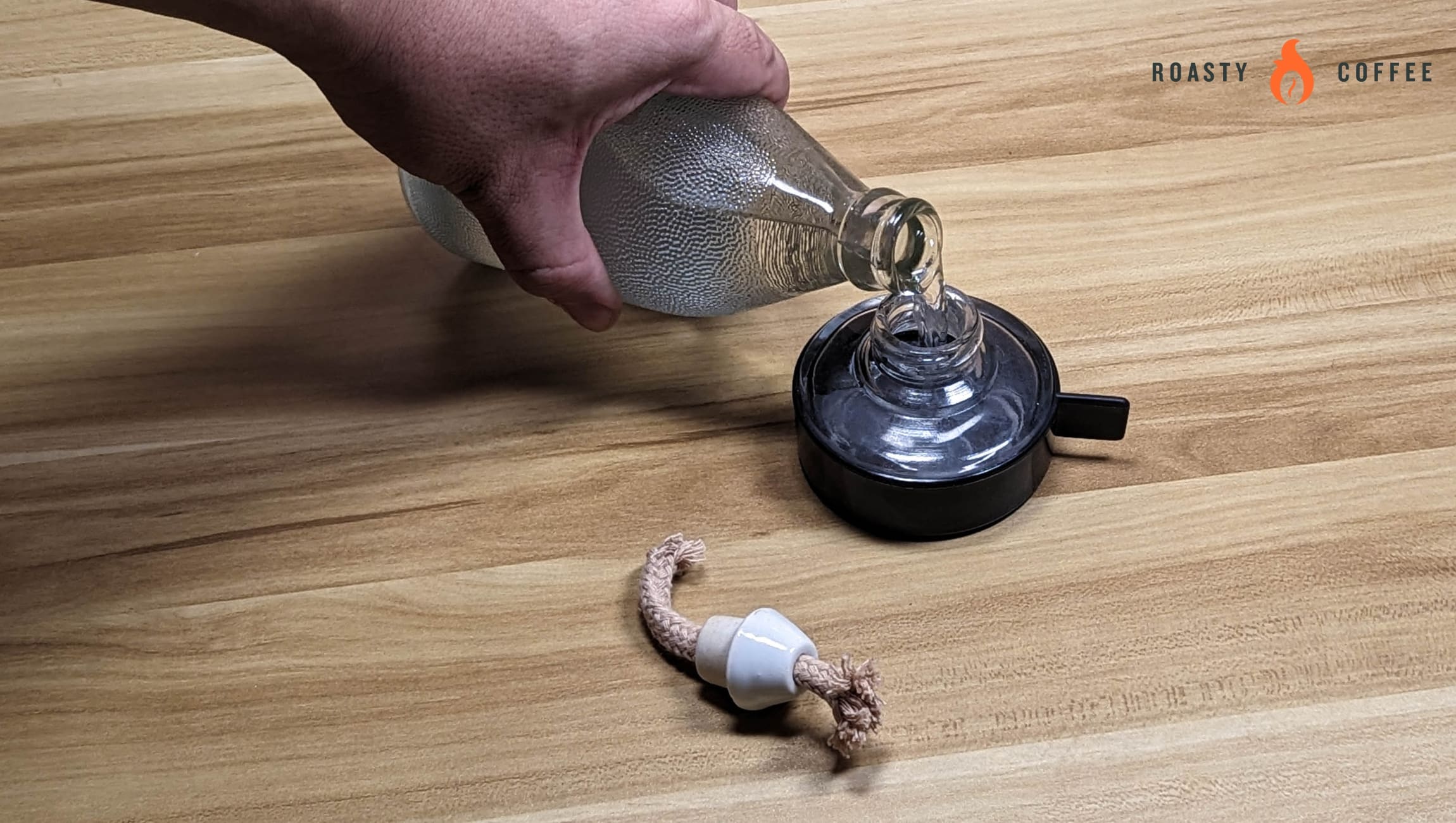
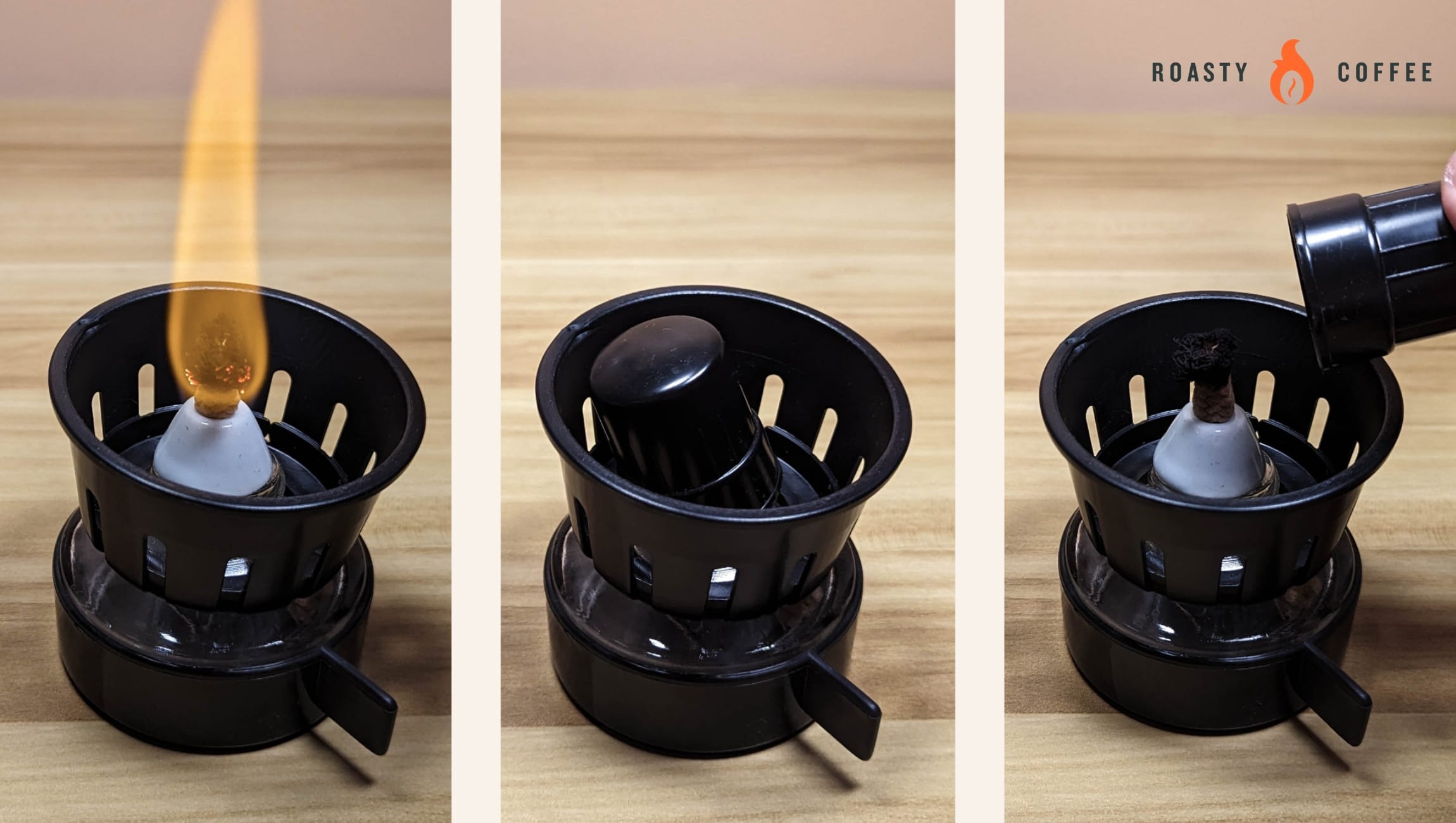
Useful Accessories
Rounding out the set are a couple of nice additions to the package. There’s a scoop with a conveniently long handle that’s great for full-pound bags and beyond. You also get a bamboo paddle that’s perfectly sized for agitating the brew on the top chamber.
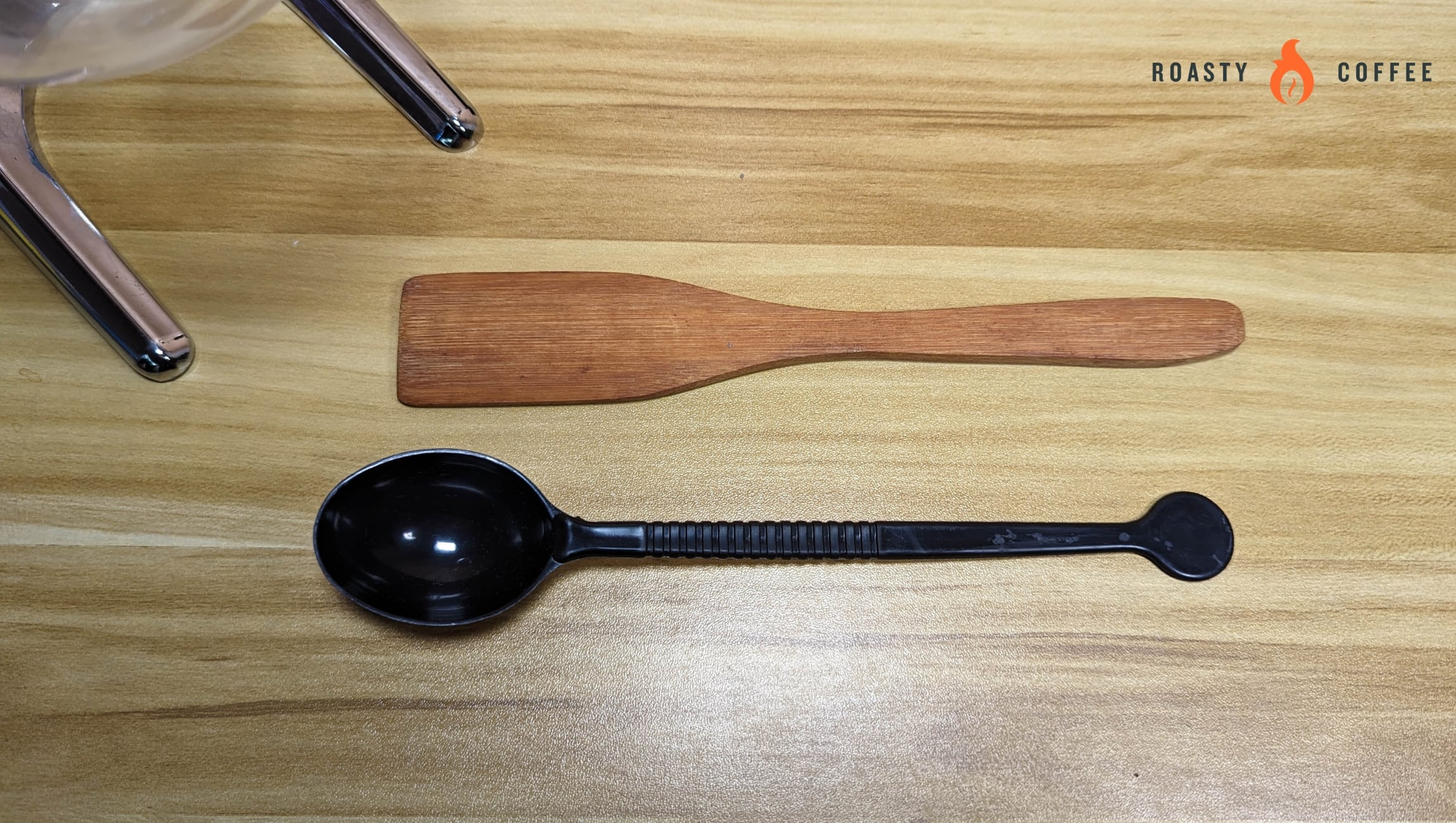
Full Immersion Vacuum Brewing
Siphons brew coffee through full immersion like a French press, which means full contact between the coffee grounds and the water. But that’s not all. The brewing process also happens in a vacuum (hence the nickname vacuum brewer).
An oxygen-free environment for brewing is like a study room with no distractions. No gas particles interfering with the process means a more efficient extraction of solubles. What does this mean? Expect much quicker brewing times with a siphon compared to a press pot.
The result is a coffee with a rich mouthfeel that’s the perfect temperature (if you like yours piping hot). Speaking of temperature…
Steady Temperatures
Thanks to a heat source that stays on as long as you need it, a siphon will brew coffee with consistent temperatures throughout. Compare this to other methods that use a kettle, where the hot water slowly cools down as you keep pouring.
Stable temps also help extract flavors from the bean more efficiently, giving you more yum in less time.
Flavor Clarity
The stock cloth filter is great for nuanced brews with a lot of clarity. Despite all the comparisons to a French press, the texture of siphon coffee is anything but sludgy.
For even more clean flavors without the risk of any off ones, consider buying the optional paper filter holder and a pack of matching paper discs.
Additional Notes and Room for Improvement
Hario’s Syphons are impressive, but there’s a reason you don’t see them at every cafe — as I said at the beginning, they aren’t for everyone. Here are some things that might be an issue for your brewing style:
Learning Curve
It’s such an involved process to set up and brew with a siphon that there are multiple ways that you can muck up your brew. This just isn’t the method to use if your brew recipe is one you play by ear.
You’ll have better luck treating your brews like a science experiment. Execute the steps carefully, document all variables and changes, and be willing to try again. You can also check out one of our brewing guides to help get you started.
Breakable Bits
I’m a bit of a klutz and unfortunately, I’ve shattered a siphon or two at my cafe. So believe me when I say that durable does not mean rugged. Take care of that glass!
This extends to the rest of the brewer too. Rubber bits on the top chamber and the stand can get brittle and affect brewing performance. Even the cloth filter assembly can snap if you pull too hard on it.
Complicated Clean-up
Back when we served siphon coffee at my cafe, we had four units in rotation. It wasn’t because we had long lines out the door. Rather, it was to limit downtime between brews because clean-up was not a breeze.
One look at the eccentric glass shapes of a siphon and it becomes apparent that the fun ends come washing time. Get a bottle brush to make things easier.
Oh, and don’t forget the filter! The cloth disc needs thorough rinsing and storage to prevent off-flavors (or worse, mold) from messing up the cup.
Turn up the Heat
While I appreciate the inclusion of an alcohol burner, you should know that it heats room-temperature water at a glacial pace. Up to eight minutes for just 10 ounces of water, in my experience!
The easiest solution to speed things along would be to pour heated water into the lower chamber at the start of the brew.
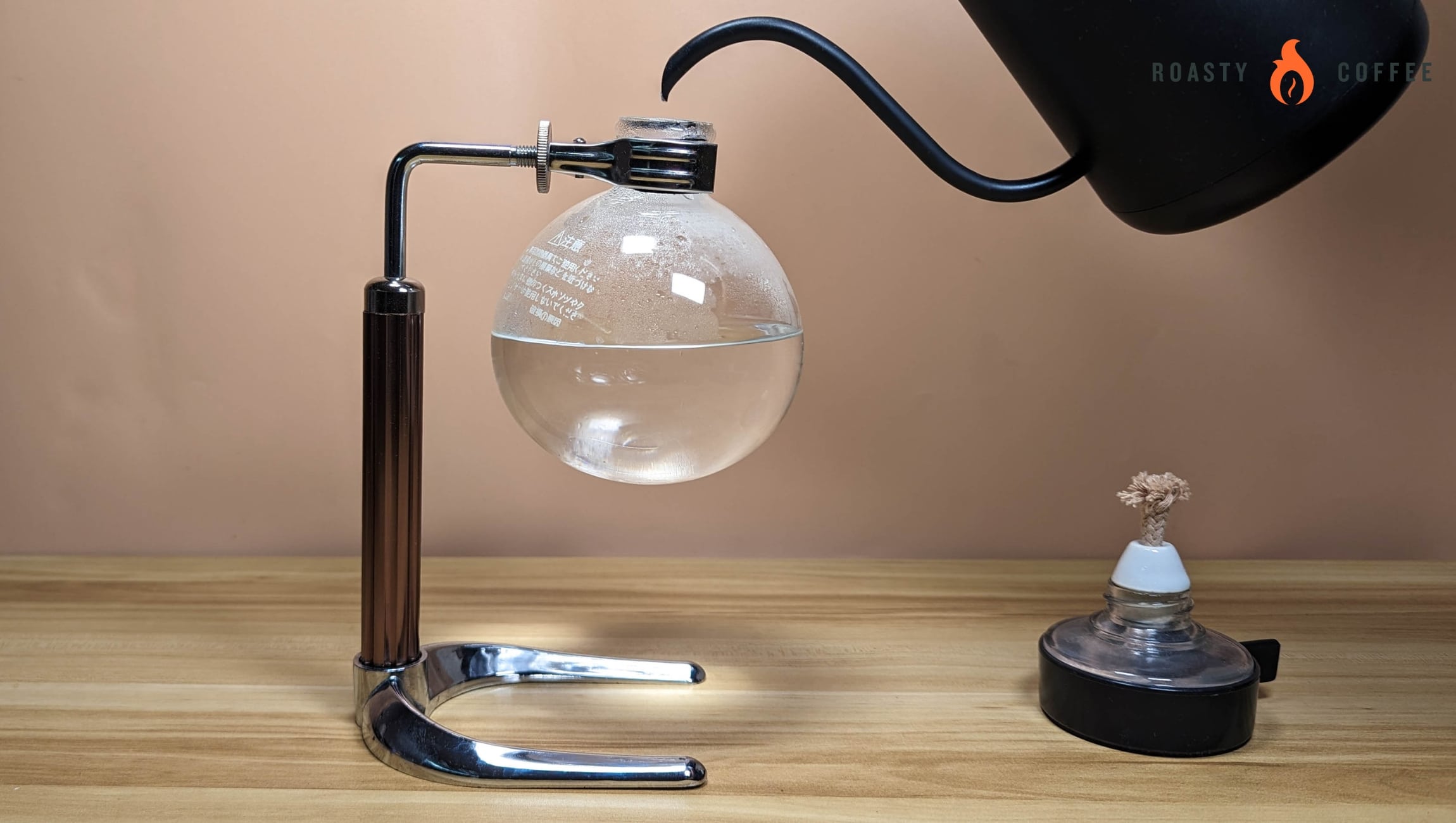
Now if you’re truly serious about siphon brewing, you might want to check out these alternative heat sources:
- Portable Butane Burner: A mini camping stove that takes butane as fuel. Quicker than the stock burner, and has a controllable blue flame.
- Halogen Beam Heater: Uses a strong bulb to generate heat. Lots of power, controllable output, very attractive, but also very expensive.
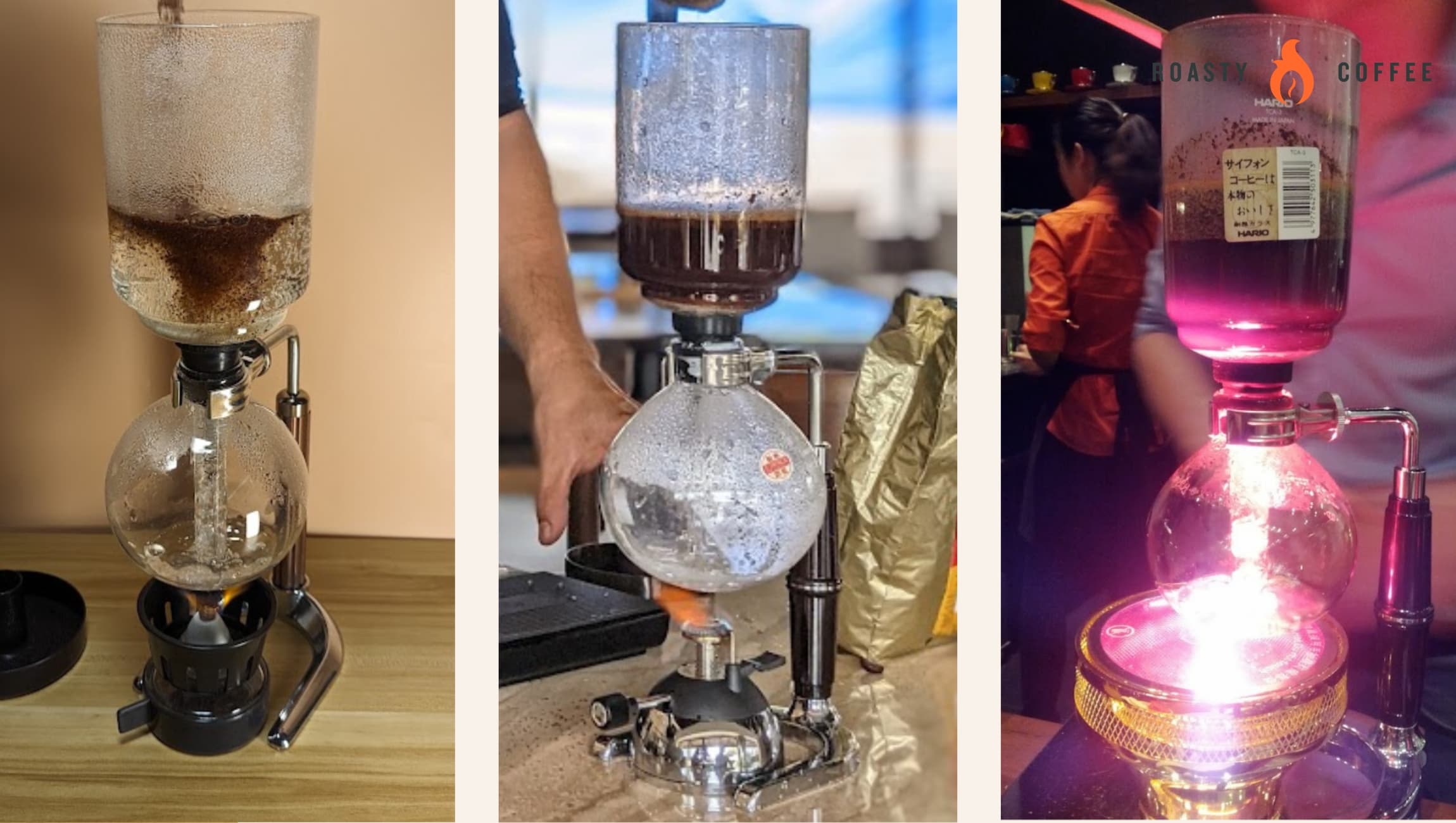
Differences Between Hario Syphon Models
We’ve talked about the perks and issues of owning one of the Hario Syphon models. But which is the best? They all work fundamentally the same, so the best pick will depend on your preferred capacity, creature comforts, and aesthetics.
| Model | Capacity | Filter Type | Special Feature |
|---|---|---|---|
| Technica | 2-cup (240ml), 3-cup (360ml), and 5-cup (600ml) | Cloth | n/a |
| Moca | 3-cup (360ml) | Cloth | n/a |
| NEXT | 5-cup (600ml) | Cloth and Stainless Steel | Ergonomic silicone carrying handle |
| Sommelier | 5-cup (600ml) | Cloth and Stainless Steel | Wine decanter-shaped bottom chamber |
| Mini Syphon | 1-cup (120ml) | Cloth | Special mini alcohol burner |
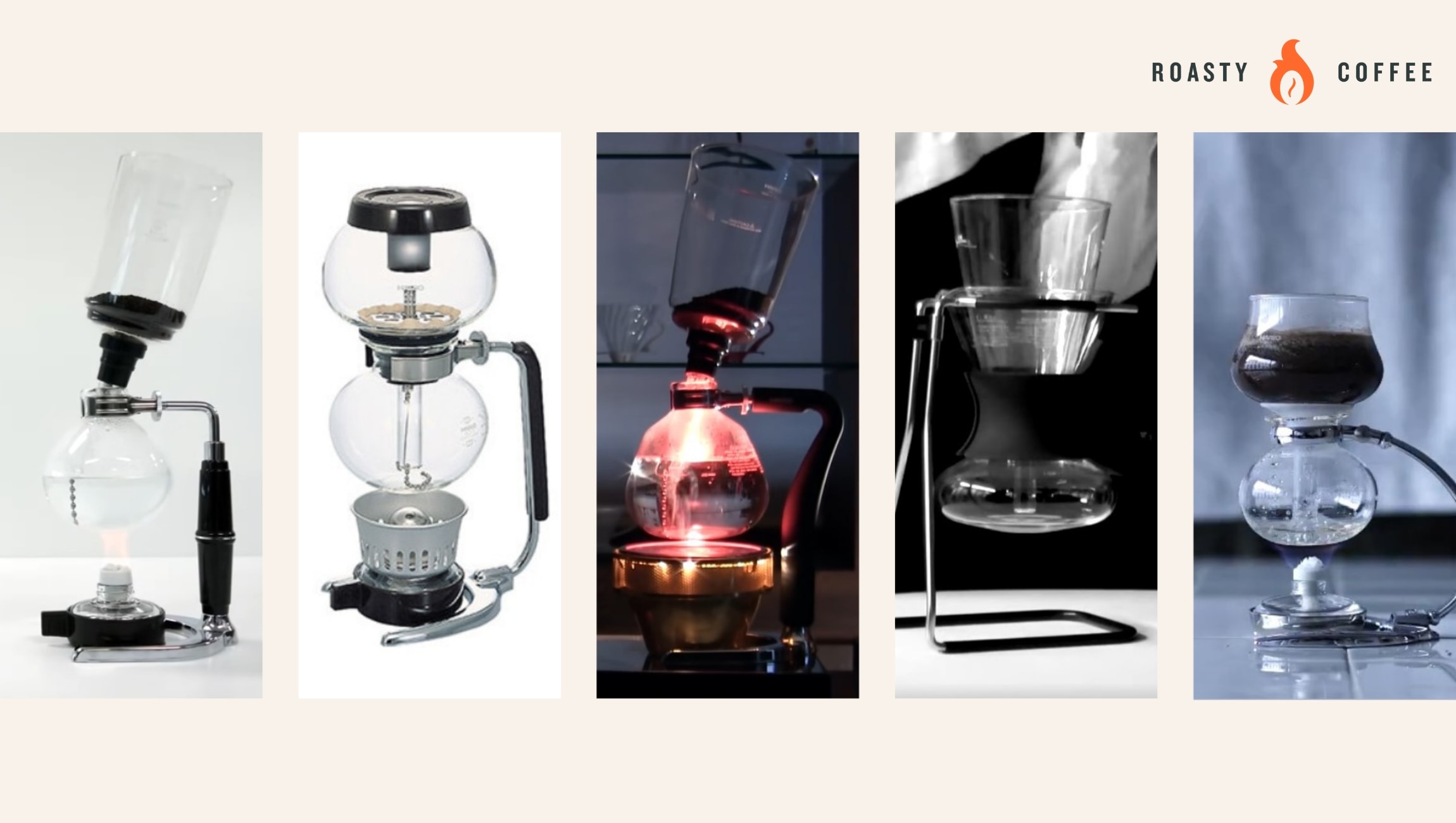
Alternatives and Wrap-up
There are far simpler brewers that offer other benefits, like portability. The Clever Coffee Dripper, for instance, offers a similar steep and strain experience, in an easy-to-use package that you can toss into your backpack.
Picking up a siphon brewer is like trying to learn a difficult musical instrument. Sure, there are other ways to play out the same melody. But are they as impressive? Or fun?
If complications and learning curves do not faze you, definitely spring for one of the Hario Syphons. The build quality is top-notch all around, from the classic ‘Technica’, to the frou-frou ‘Sommelier’.
Just hit the right beats and you’ll be treated to a properly hot cup of coffee full of richness and clarity, with the bonus of a captivating brewing performance. Bravo, Hario! Rating: 4/5.
Happy Caffeinating!
Our Hario Syphon Review: The Coffee Maestro’s Choice
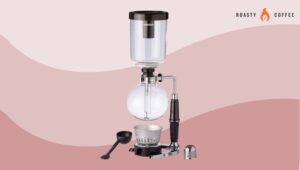
Discover the pros and cons of this stylish brewer in our comprehensive Hario Syphon review. Find out if it's the right brewing method for you.
Product In-Stock: InStock
4.5







